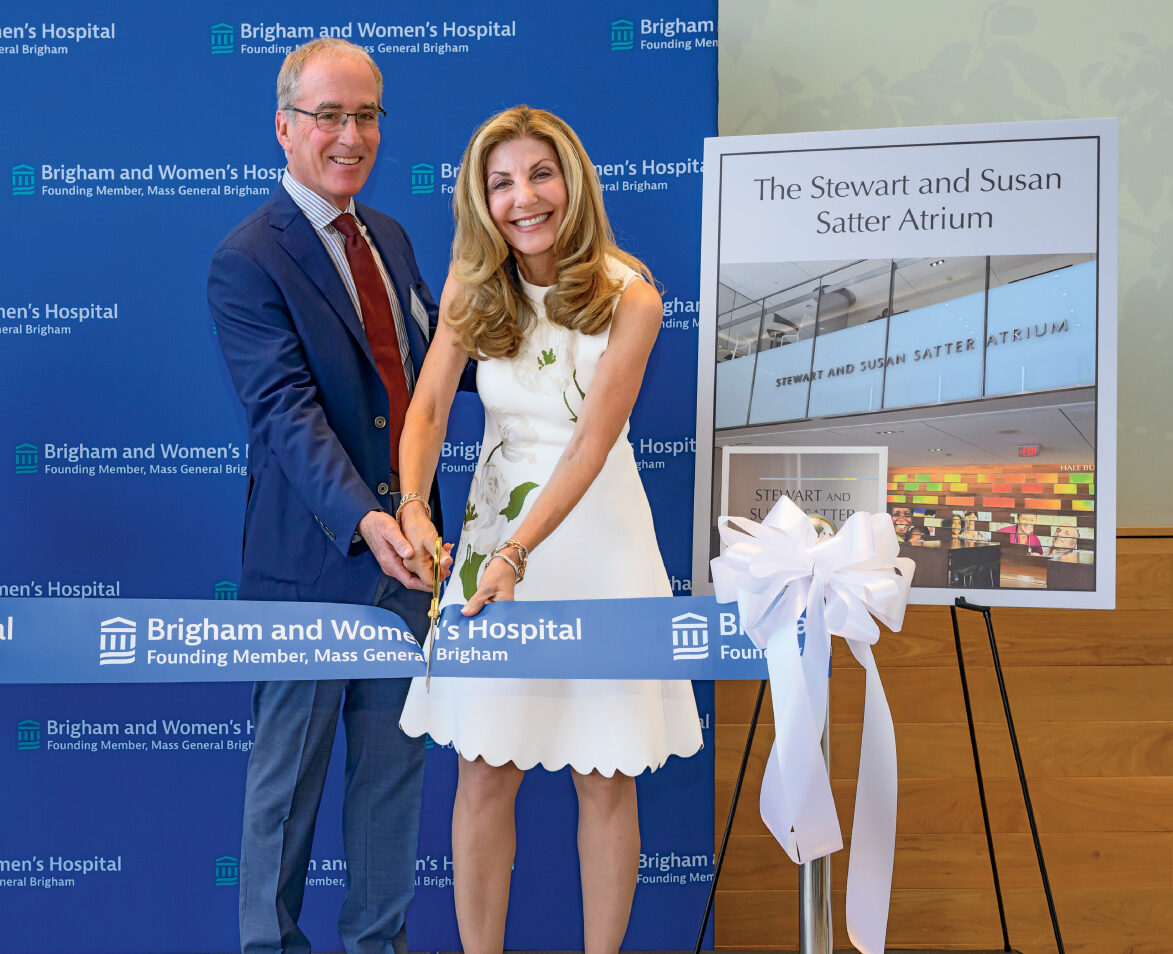Satter Atrium dedicated in honor of $2 million gift

Susan and Stewart Satter have deep ties to the Brigham. Thankful for the expert care they and their family members have experienced, the Satters have supported the hospital for more than a decade, including a gift to spur advances in robotic surgery for pancreatic cancer in honor of Susan’s father.
“We’ve been fortunate and don’t take our success for granted, and that’s what giving back is about for us,” says Stewart. “Philanthropy has been an important part of our life—it has led us to meeting many wonderful people who truly are making a difference in the world. That has been our experience at the Brigham.”
[The Brigham] is cutting edge and world-class, and warm at the same time. That is what the atrium represents to us.
Recently, the Satters committed $2 million to the Brigham. In recognition of the couple’s generosity, the hospital dedicated the Stewart and Susan Satter Atrium in the Hale Building for Transformative Medicine, a powerhouse of research and clinical care in the heart of the Longwood Medical Area.
Support our work
Make a gift to support medical innovation, training, and breakthroughs.
Donate now
“Given our Boston roots, we have always known the Brigham as a special place,” Stewart adds. “It is cutting edge and world-class, and warm at the same time. That is what the atrium represents to us. It’s been wonderful to see that innovation and care making an impact for patients and the community.”
Giles W.L. Boland, MD, president of Brigham and Women’s Hospital and the Brigham and Women’s Physicians Organization, executive vice president at Mass General Brigham, and the Cook Distinguished Professor of Radiology, says, “We are so thankful for the Satters’ longstanding generosity to the hospital and for their tremendous gift to enhance our care environment. Stewart and Susan understand outstanding care begins the moment you arrive at our doors.”
The couple hopes everyone who passes through the Satter Atrium will feel the gratitude that inspired their gift.
“It makes us feel good to imagine people visiting the hospital and taking a moment to relax before they head to where they are going,” Susan says. “It’s our way of giving back and saying thank you.”